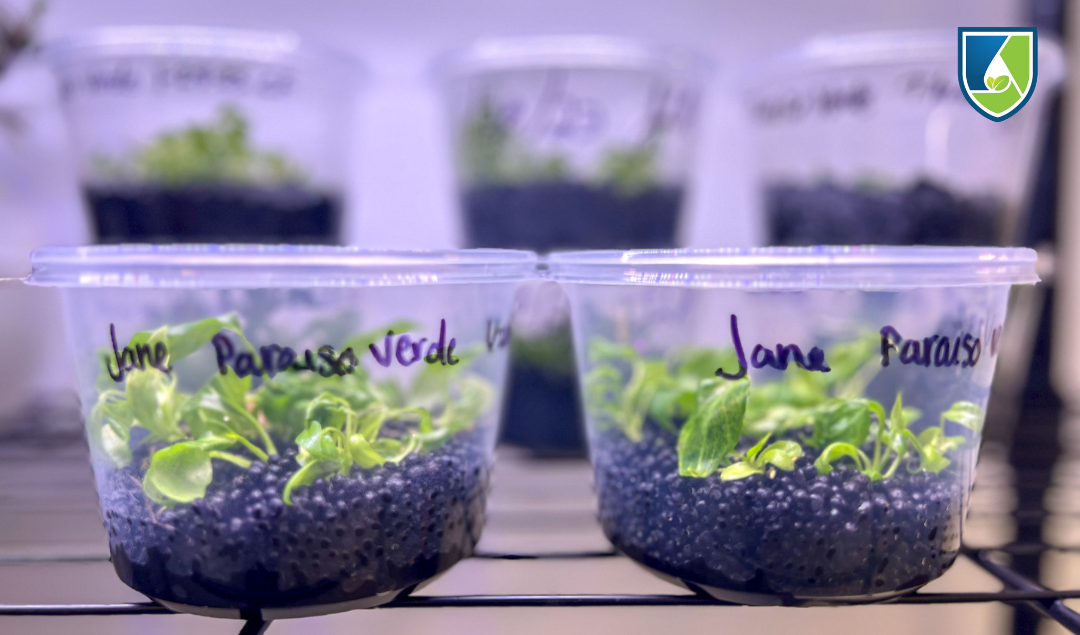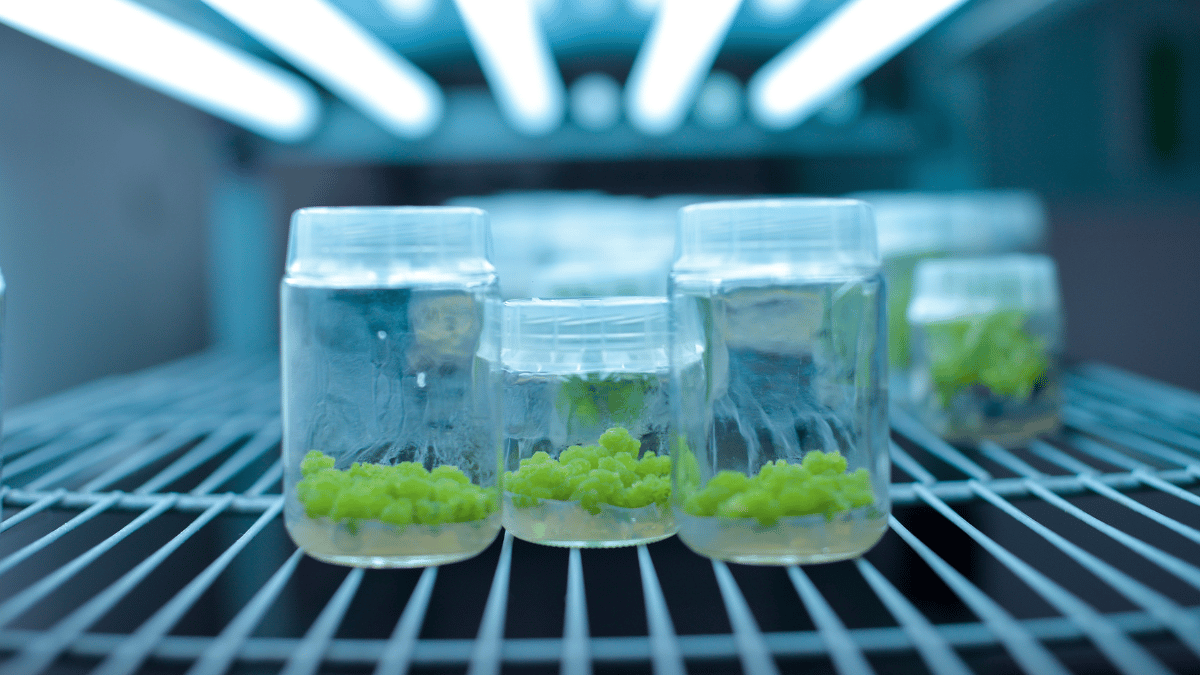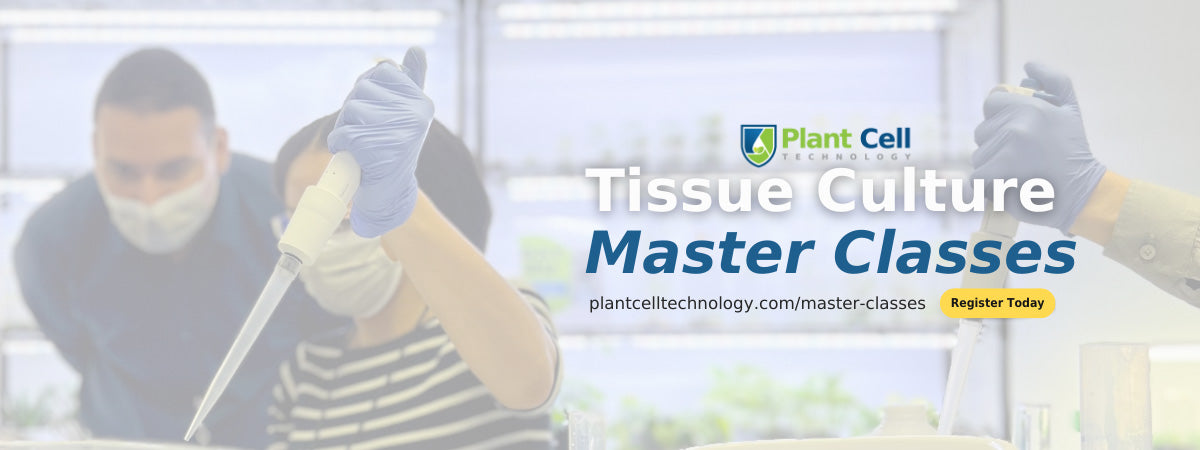
Cultivate Like a Pro: 10 Plant Tissue Culture Tips You Need To Know
As a content and community manager, I leverage my expertise in plant biotechnology, passion for tissue culture, and writing skills to create compelling articles, simplifying intricate scientific concepts, and address your inquiries. As a dedicated science communicator, I strive to spark curiosity and foster a love for science in my audience.


The tissue culture technique is a multi-step process. The success of cultures depends on many factors surrounding each stage. In this blog, we'll share five invaluable tips that you can seamlessly integrate into your tissue culture processes to enhance efficiency and reduce errors.
Introduction
Tissue culture is an advanced technology that allows growers to propagate numerous plants using only a small quantity of plant tissues within a precisely controlled laboratory environment.
This technology assumes a pivotal role not only within the nursery business but also in the realms of research and industrial processes. In research, it serves as a means to delve into the intricate metabolic processes and understand plant growth and development. In industrial applications, it facilitates the large-scale production of exotic plants and secondary metabolites, which find utility in medicinal or cosmetic products.
The widespread adoption of tissue culture technology can be attributed to its multifaceted advantages, including the ability to:
- Cultivate plants year-round.
- Generate disease-resistant species.
- Conserve endangered plant species.
- Produce plants for commercial purposes.
- Produce hundreds and thousands of plants in 1/10th of the space required using conventional approaches.
- Yield haploid plants
And, more!

Learning about these advantages, the technique might seem alluring for your business. However, if you're a beginner, it might not come easy to you. But, fret not, we've got you covered.
In this blog, we'll share five invaluable tips that you can seamlessly integrate into your tissue culture processes to enhance efficiency and reduce errors.
Stages of Tissue Culture
The tissue culture technique is a multi-step process. The success of cultures depends on many factors surrounding each stage. It consists of four stages:
Initiation Stage
The initiation stage marks the beginning of the tissue culture process. During this phase, a small piece of plant material, known as an explant, is collected from the source plant. It could be a tiny section of a leaf, stem, or any other plant part depending on the purpose of the culture.
One of the key challenges during the initiation stage is ensuring the explant is free from contaminants. This is achieved through thorough surface sterilization using disinfectants like bleach or ethanol. Once sterilized, the explant is placed onto an agar-based culture medium containing essential nutrients and growth regulators tailored to the specific plant species and tissue type. The goal here is to initiate the growth of plant cells or calluses from the explant.
Multiplication Stage
After the initiation stage, the cultures move on to the multiplication stage. During this phase, the primary objective is to promote the rapid multiplication of plant cells or calluses. This is achieved by adjusting the concentration of growth regulators in the culture medium to stimulate cell division and shoot formation.
As the cultures progress through the multiplication stage, it is crucial to monitor their growth regularly. Subculturing may be necessary to prevent overcrowding and maintain the health and vigor of the cultures. This stage often results in an increase in the number of plantlets or shoots, which are typically small and immature.
Rooting Stage
Once an adequate number of shoots have been produced in the multiplication stage, the next step is the rooting stage. At this point, the primary goal is to encourage the development of roots on the plantlets. This is essential for the transition from in vitro (in the lab) to ex-vitro (outside the lab) conditions.
Rooting is usually induced by adjusting the composition of the culture medium. Growth regulators, such as auxin, are used to stimulate root formation and elongation.
Acclimation Stage
The acclimation stage is the final step in the tissue culture process before the plantlets are ready for transplantation to soil or their final growing environment. This stage is critical because the plantlets have been growing in a controlled, sterile environment and need to adapt to the outside world.
During acclimation, the plantlets are gradually exposed to reduced humidity and increased light levels. This transition helps them develop thicker cuticles and adjust to the conditions they will face in their natural environment. This process may take several weeks, and it's crucial to monitor the plantlets for any signs of stress or disease.
Once the plantlets have successfully acclimated, they can be transferred to soil or other growing media, where they continue their growth as mature plants.
Ten Tips To Elevate Your Tissue Culture Game

Tissue culture is both an art and a science. It requires precision, patience, and a keen eye for detail. This innovative technology is the backbone of countless scientific discoveries, and knowing how to do it right can make all the difference.
However, considering the multiple steps involved in the process, there’s room for a number of errors. Here we share ten tips to help you be more organized during the process and succeed in your tissue culture game.
1. Make a list to reduce errors and be more organized
While making the growth media or stock solutions, keep a checklist and check off each box as you add a certain component. This helps you to be aware of what you’ve already added, in what quality, and what still needs to be done.
Especially when you’re preparing a stock solution, where a single error means months of problems (because you need to use it for a longer time), this approach is magic for you.
Keeping a list of items before culturing is also an effective way to stay organized. This ensures you don’t forget anything and perform your experiment without going in and out of the culturing room. (Did you know this also helps you to reduce the contamination chances? ).

2. Only use healthy explants
To ensure that you obtain healthy and disease-free plants, it’s essential that you only choose healthy explants or starting material for the process. You can test your plant or explant using different molecular techniques for the presence of any pathogens, too, in case you also want to ensure the plant is not good from the outside but great from the inside.
Also, consider factors like the age, size, and position of the explant on the plant while choosing one for your process. (Yes, these factors hugely influence the response you receive from cultures).
3. Keep your work area clean and sterilized
No, we aren’t just talking about cleaning your culturing area. In addition to that, you need to keep your lab clean as well. The waste bin is a major source of contaminants, so clean them and sterilize them using ethanol regularly.
4. Prepare media ahead of time
You wonder why? Well, preparing media in advance of starting tissue culture processes helps you to see if the media is sterilized well or not. In case the autoclave is faulty, you may be able to observe contamination in the media in a couple of days.
Flasks with medium can be stored at 4 °C for 1–2 weeks. It’s recommended to avoid using media stored for several months, to prevent any chances of contamination.
Further, if you want to guard against contamination, use PPM™—a broad-spectrum formula to protect your cultures against contaminants.

5. Let the media cool to prevent condensation
You might be frequently observing excessive condensation in your culture vessels, it can be because you’re pouring very hot media into the culture dishes and jars. Do not do that. Let the media cool down a bit (let it fall to at least 50°C) and then pour into respective vessels.
6. Use these chemicals to prevent the browning of explants and media
Browning is one of the major issues in plant tissue culture processes. Browning of tissue culture media is caused by phenolic compounds released from plant tissues. Enzymatic browning, facilitated by polyphenol oxidases (PPOs), further contributes to discoloration. The situation hinders the preservation and propagation of our valuable plant genetic resources.
This can be controlled by either using charcoal, antioxidants, or polyphenol inhibitors in your media. Frequency subculturing also helps with the problem by avoiding the accumulation and penetration of the phenolic compounds in the media and explants.
7. Label your culture vessels clearly and accurately
It may seem like a minor detail, but accurate labeling of your culture vessels is crucial. Clearly mark each container with essential information such as the date of initiation, plant species or genotype, culture stage, and any specific conditions or treatments.
This helps prevent confusion and ensures you can track the progress of your cultures accurately. Neglecting proper labeling can lead to mix-ups, lost data, or misidentification of cultures, which can be costly and time-consuming to correct.

8. Regularly inspect equipment and supplies
Periodically inspect your equipment (such as laminar flow hoods and incubators) and supplies (such as pipettes and culture vessels) for cleanliness and proper functioning. This proactive approach can help identify potential problems early, preventing contamination or equipment failures that could jeopardize your culture.
Several instances of improper sterilization have been observed when using a malfunctioning autoclave, which led to issues with the media. So, keep an eye on your autoclave.
9. Document and record everything
Maintain detailed records of all your tissue culture activities, including media preparation, subculturing schedules, and any deviations from your standard protocols. This documentation is invaluable for troubleshooting issues, ensuring reproducibility, and tracking the history of your cultures.
Effective record-keeping becomes indispensable when you're in the midst of experimenting with various nutrient media formulations to determine which one suits your plants best. Moreover, maintaining detailed records of what proves most effective for your plants serves as a strategic investment in future endeavors.
Picture this: You return to work with the same plant species after a considerable break. Your meticulous notes become a valuable shortcut, sparing you from extensive trial and error. They streamline your path, ensuring you pick up where you left off and continue to nurture your plants with the same level of precision, even after an extended hiatus.

10. Practice patience and avoid rushing
Last but not least, we recommend being patient throughout the entire process of tissue culture. Tissue culture can be a meticulous process that requires patience. Avoid rushing through critical steps, such as explant selection and surface sterilization. Take your time to ensure that each procedure is carried out carefully and accurately, as shortcuts can lead to contamination or suboptimal results.
So, when you find yourself in the tissue culture zone, take a deep breath, slow down, and remember that patience is your ally. Each deliberate step you take ensures the success of your culture and the reliability of your results.
Want To Be An Expert In Tissue Culture Application? Plant Cell Technology Can Help!
Plant Cell Technology is helping tissue culturists around the world by providing unique and world-class products and services that streamline their tissue culture workflows. It has MS media, agar, gellan gum, Plant Preservative Mixture (PPM), culture vessels, Biocoupler (TM), and masks in its store to facilitate your processes.
And, that’s not it! Plant Cell Technology also offers consultation services to culturists of all sizes that help to get instant solutions to your tissue culture problems.
However, if you're willing to learn directly from an expert, we've got you covered!
Our comprehensive tissue culture master classes are designed to teach everything about tissue culture, ranging from theoretical concepts to hands-on experience in explant and media preparation, multiplication, rooting, and acclimation of plants. Additionally, it also covers advanced tissue culture techniques, such as shoot apical meristem and synthetic seed production to make you the next pro in the industry.
All our masterclasses are taught by tissue culture experts having experience of 10-30 years in the field. They not only help you learn the tissue culture concepts but also share their personal success and failure stories to learn from them and start your tissue culture journey with a bang.
Seems something long awaited. So, why wait? Sign up for your choice of tissue culture master class TODAY and excel in your tissue culture game!
Blog Categories
View by Level
Popular Blogs

Callus Culture: Definition and Applications
Introduction Tissue culture is not just one technique! Yes, you heard right! As you know, tissue culture is an advanced...
Read More
6 Plant Tissue Culture Books to Keep Learning
Introduction Most of us are fans of books when it comes to learning a topic in detail and in a...
Read MoreSubscribe to Our Newsletter








Join the conversation
Your email address will not be published. Required fields are marked